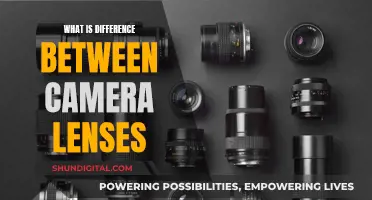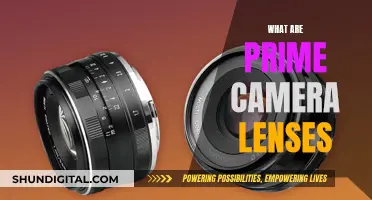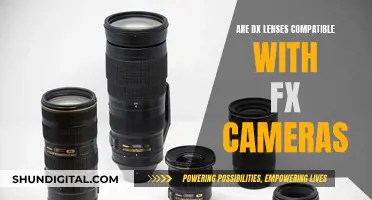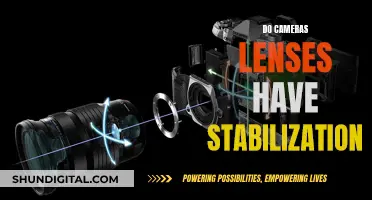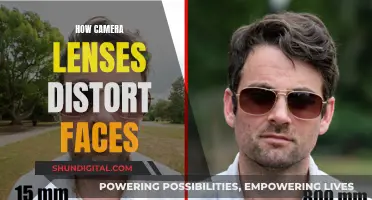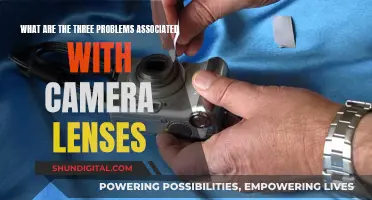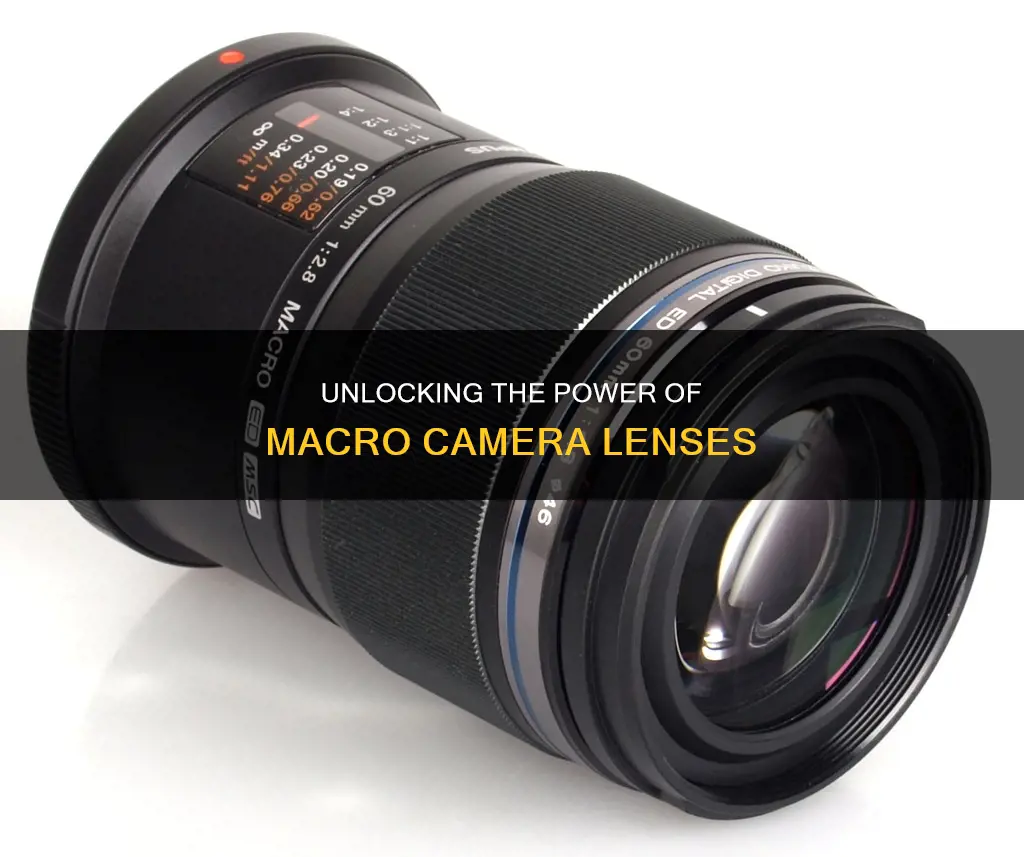
A macro lens is a camera lens designed for close-up photography, usually of very small subjects and living organisms like insects. They allow you to focus extremely close to a subject so that it appears large in the viewfinder and in the final image.
The most important property of a macro lens is its magnification ratio, also known as the reproduction ratio. This describes how much the subject will be enlarged in the final image. A magnification ratio of 1:1 means that when the camera is positioned at the closest focusing distance, the image formed on the sensor will be the same size as the subject.
Macro lenses come in a variety of focal lengths, from wide-angle to telephoto. The focal length will determine your field of view, working distance, and background blur when photographing your subject.
While most macro lenses are prime lenses, there are some zoom macro lenses available, though they tend to be of lower quality and don't achieve as high magnification ratios.
| Characteristics | Values |
|---|---|
| Purpose | To take sharp, detailed, close-up photos of small subjects |
| Typical subjects | Insects, flowers, plants, jewellery, coins, water droplets, food, portraits |
| Focal length | 50mm, 100mm, 180mm |
| Magnification ratio | 1:1 or higher |
| Minimum focusing distance | 12 inches (30cm) or less |
| Aperture | Wide |
| Weight | Heavy |
| Size | Large |
| Image quality | High |
What You'll Learn

What is a macro lens used for?
A macro lens is used for capturing sharp, highly detailed images of minuscule subjects. It is a camera lens that is optically optimised to handle extremely close focusing distances. It can be used for shooting close-ups of insects, flowers, jewellery, coins, food, and other everyday small objects.
The macro lens is also a great lens for newborn photography, allowing photographers to focus on the tiny details like the baby's eyelashes, fingers, or toes. It is also ideal for product photography, especially for smaller products.
The lens can also be used for portrait photography, as it captures amazing detail and allows for correct focus even when standing very close to the subject. Macro lenses come in a variety of focal lengths, from wide-angle to telephoto, allowing for different fields of view, working distances, and background blur capabilities.
The macro lens is a versatile tool that can be used for a range of photography types, including portraiture, landscape, and astrophotography. It is a great addition to any photographer's kit, allowing them to explore the tiny universe around us in sharp, detailed images.
Testing Camera Lenses: The Ultimate Sharpness Guide
You may want to see also

What is a 'true' macro lens?
A "true" macro lens is one that has a magnification ratio of 1:1 or higher. This means that the subject will be reproduced on the camera's sensor at life-size or larger. For example, a 15mm-long subject would be projected as 15mm long onto the sensor.
True macro lenses are optically optimised to handle extremely close focusing distances, allowing you to capture sharp, highly detailed images of minuscule subjects. They typically have a minimum focusing distance of around 12 inches (30 centimetres) or less.
The best macro lenses will have a flat-field design, meaning the image will be in focus from edge to edge in the frame. This is in contrast to curved-field lenses, which have a concave plane of focus, resulting in softer edges.
When purchasing a dedicated macro lens, look for a magnification ratio of 1:1 or higher.
Understanding Camera Lenses: Converging or Diverging?
You may want to see also

What are the pros and cons of different macro lens focal lengths?
A macro lens is a camera lens that allows you to focus extremely close to a subject so that it appears large in the viewfinder and in the final image. True" macro lenses are able to project subjects onto the camera's sensor at life-sized reproduction at a 1:1 ratio, resulting in a 1.0x Maximum Magnification.
Macro lenses come in a variety of focal lengths, from wide-angle to telephoto. The focal length determines the field of view, working distance available, and background blur when photographing a subject.
Wide-angle macro lenses (45-65mm):
Pros:
- Best focal length for product photography, capturing small subjects, and shooting scenes that require a natural background perspective.
- Smaller, lighter, and less expensive than longer focal length macro lenses.
Cons:
Shorter focal length macro lenses can be more challenging to use at very short distances due to the shallow depth of field.
Mid-range macro lenses (90-105mm):
Pros:
- Suitable for shooting insects, small animals, flowers, plants, and other small subjects while maintaining a comfortable distance from the subject.
- Offers a good balance between magnification and working distance.
Cons:
May not provide enough working distance for very skittish subjects or for avoiding casting shadows on the subject.
Long-focal-length macro lenses (150-200mm):
Pros:
- Allows for greater working distance, which is beneficial for photographing insects or other small, easily disturbed subjects.
- Produces more pronounced background blur, which can effectively isolate the subject and showcase it against a blurred background.
Cons:
- Longer focal length macro lenses tend to be bulkier, heavier, and more expensive.
- May be less versatile for beginners who are still exploring different photography styles.
In summary, the choice of macro lens focal length depends on the specific needs of the photographer. Wide-angle macro lenses are ideal for product photography and capturing small subjects, mid-range macro lenses offer a good balance for shooting insects and flowers, and long-focal-length macro lenses provide greater working distance and background blur but are more expensive and less versatile for beginners.
Shade Covers for Cameras: What Are They?
You may want to see also

What are some alternatives to using a macro lens?
A macro lens is a dedicated camera lens that is optically optimised to handle extremely close focusing distances. It can take sharp, highly detailed images of minuscule subjects. However, they can be expensive and are often heavy. Here are some alternative ways to achieve macro photography without a macro lens:
Close-up lenses
Also known as supplementary lenses, these are perhaps the cheapest alternative for getting into macro photography on a budget. They screw into the filter thread of your camera's existing lens and allow the lens to focus closer than its normal minimum focal length. They are highly portable and allow you to retain all of the auto features of your lens. However, the downside is the potential loss of image quality.
Extension tubes
These are placed between your camera and your lens, increasing the distance from the camera to the lens, and thus decreasing the minimum focusing distance. They come in different lengths which offer varying levels of macro ability. They are available with or without electrical contacts. The latter are more expensive but are worth it as you will want control over the aperture.
Reversing rings
By attaching your lens backwards on your camera using a special adapter, you can often achieve an image with much better magnification than using the lens normally. The wider your lens, the more macro ability it will have when reversed. However, the downfall of this method is the loss of aperture control.
Teleconverters
Teleconverters extend the focal length of your lens. When attached, they affect the focal length but not the minimum focusing distance, which can put you in the macro range. They are the only alternative that doesn't affect your ability to focus on infinity, offering versatility. However, they can show a loss in sharpness and emphasise aberrations of your lens.
Lens diopters
Also known as macro clip-on lenses or macro filters, these screw on or clip directly onto the front of your lens. Diopters decrease the minimum focusing distance that you can normally achieve with a lens, allowing you to double or even quadruple the normal magnification of a given lens. They can be used on almost any lens with the same filter thread diameter as the diopter itself. However, they can cause a loss of image quality, with a decrease in sharpness and the appearance of purple fringing.
Choosing the Right Camera Lenses: A Beginner's Guide
You may want to see also

What are some of the best macro lenses on the market?
A macro lens is a dedicated camera lens optically optimised to handle extremely close focusing distances. It can take sharp, highly detailed images of minuscule subjects.
Canon RF 100mm f/2.8L Macro IS USM
This lens offers a big reproduction ratio, highly effective stabilisation, and a dedicated bokeh control ring. It is, however, only for Canon RF cameras and is quite expensive.
Canon EF 100mm f/2.8L Macro IS USM
Canon's DSLR macro lens helps you maximise the depth of field with excellent quality throughout the entire aperture range. It also has a nice manual focus action.
Nikon Z MC 105mm f/2.8 VR S
The Nikon Z 105mm offers a level of precise control for super-fine adjustments to focusing. It is an all-around stunning lens with pro-grade construction and handling.
Fujifilm XF 80mm f2.8 LM OIS WR Macro
This lens produces beautiful image quality and is weatherproofed. It is, however, not cheap.
Sigma 105mm f/2.8 DG DN Macro Art
This lens is available for Sony mirrorless cameras and its image quality is stellar.
Panasonic Lumix S 100mm f/2.8 Macro
The Panasonic Lumix S 100mm impresses with its pin-sharp quality, accurate focusing and balanced construction. It is compact for a full-frame lens.
Sony FE 90mm f/2.8 Macro G OSS
This lens is pricey but offers excellent autofocus and stabilisation.
Olympus M.Zuiko 90mm f/3.5 Macro
This lens makes the most of the advantages of Micro Four Thirds, delivering an equivalent 4:1 reproduction ratio that seriously enlarges subjects.
Understanding Camera Lenses: A Beginner's Guide to Photography
You may want to see also
Frequently asked questions
A macro lens is a camera lens designed for taking sharp, detailed, close-up photos of small subjects such as insects, flowers, and products. They can focus much closer than normal lenses, allowing you to fill the frame with your subject and capture more detail.
A macro lens is specifically designed for close-up photography, with a short minimum focus distance. They also have a higher reproduction ratio, meaning the subject will appear larger in the final image.
The magnification ratio describes how much larger the subject will appear in the final image. A magnification ratio of 1:1 is considered "true macro", meaning the image on the sensor is the same size as the subject.
Macro lenses come in a range of focal lengths, from 35mm to 200mm. Shorter focal lengths (50mm-60mm) are cheaper, smaller, and lighter, but you need to get closer to the subject. Longer focal lengths (150mm-200mm) give you more working distance but are heavier and more expensive.
There are some alternatives to using a dedicated macro lens, such as extension tubes, bellows, close-up lenses, or reversing rings. However, these methods often result in lower-quality images and can be more difficult to use.


